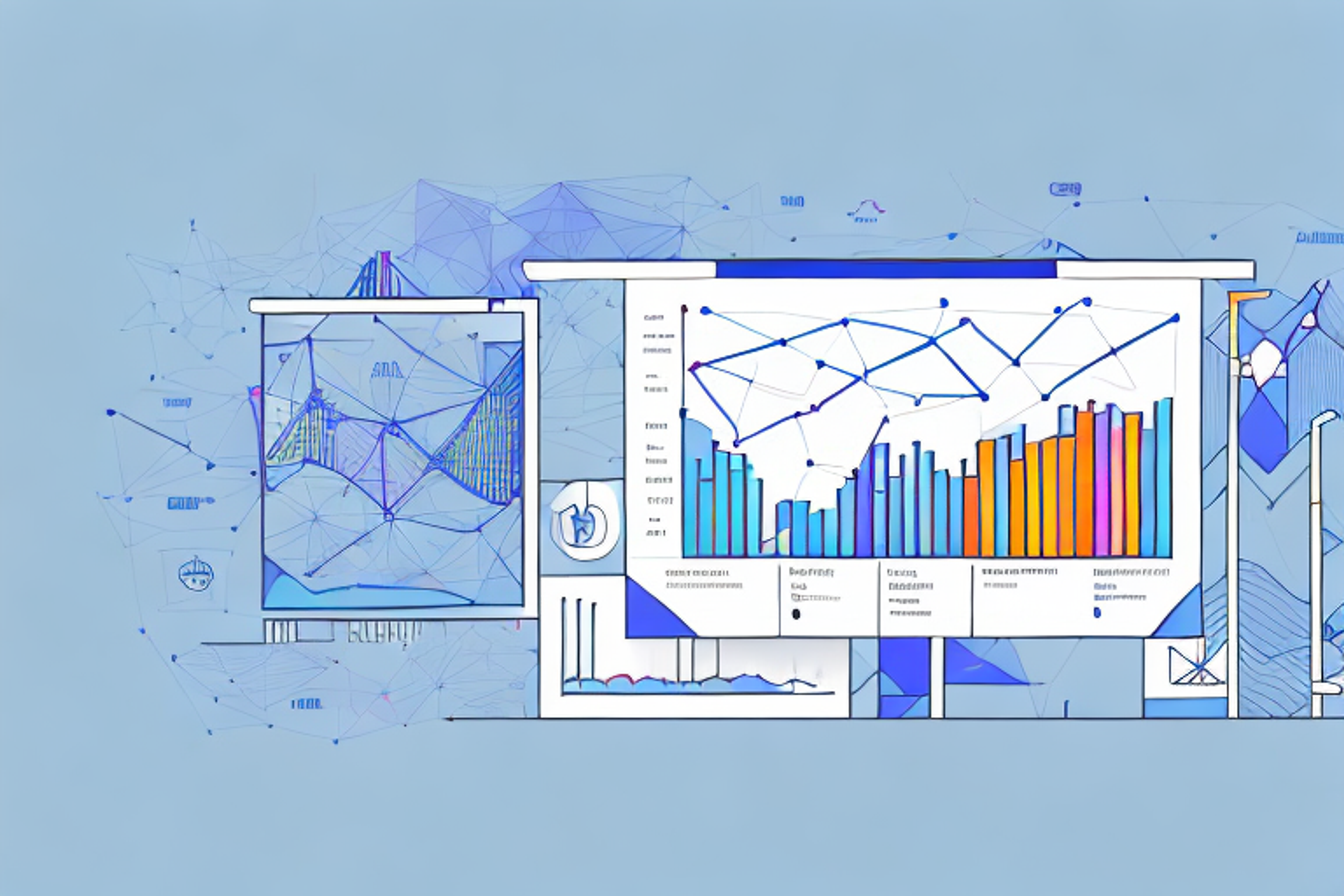Business Intelligence Vs. Data Analytics: What's the Difference?
Discover the key differences between Business Intelligence and Data Analytics in this informative article.
Posted April 10, 2025

Table of Contents
If you're in the field of information technology or business operations, then you must be familiar with the terms Business Intelligence (BI) and Data Analytics (DA). While both terms seem to describe the same domain, there are critical differences between the two. In this article, we will explain the differences and similarities between BI and DA and help you determine which one is best for your organization.
Defining Business Intelligence and Data Analytics
Business Intelligence (BI) deals with the process of collating, analyzing, and interpreting business data to improve decision-making skills. BI solutions extract data from a range of sources, transform it into insightful analytics, and display it on a dashboard or report. Typically, the focus of a BI system is providing executives and managers with business insights and key performance indicators (KPIs) to suggest a direction for the company.
Data analytics refer to the analysis of raw data to get insights, patterns, and trends. The process involves collecting, processing, cleaning, and modeling data to derive meaningful business insights. DA tools help organizations identify new market trends, customer behavior, and emerging business opportunities, providing data analysts with a comprehensive data pool they can use to generate conclusions for specific use cases.
Understanding the Purpose of Business Intelligence and Data Analytics
Business intelligence helps executives and managers detect inefficiencies and areas for improvement in the business. With BI solutions, managers can track performance across departments, compare them with competitors' performance and trends. BI decision-making is primarily data-driven, enabling better decision-making, and measuring the effectiveness of new strategies and initiatives.
Data analytics is mainly used to help specific business functions. In contrast to BI, which is broader, DA focuses on specific industries. DA is useful in identifying new areas for the business to explore, providing valuable insight on where the company can find efficiencies and lower costs. Data analytics tools can spot trends such as market shifts, emerging customer demand, and even uncovering new markets within the company's current customer base.
The Importance of Business Intelligence and Data Analytics in Today's World
Both BI and DA are critical components of modern business operations. As the speed, volume, and complexity of business data continue to increase, companies need to have the right tools and strategies to help them gain insights, make informed decisions and remain competitive. BI and DA work in tandem to provide organizations with the data and insights they need to stay ahead of the curve. By leveraging the power of data analytics and business intelligence, companies can predict future growth or shrinkage, reduce operational costs, improve decision making and respond to customer needs and demands more effectively.
The Tools and Techniques Used in Business Intelligence and Data Analytics
Both BI and DA rely on tools and techniques to extract, transform, and analyze data. BI tools include data warehouses, ETL processes, and dashboards. Data Warehouses are data repositories that store and organize business data, making it easier to analyze. Extract Transform Load (ETL) processes ensure the data is complete and accurate before moving into a business intelligence system. The dashboard is a visual representation of data that summarizes complex data into an easily understandable format.
Data analytics tools include statistical analysis, data mining, predictive analytics, and data visualization. Statistical analysis is a mathematical process used to summarize data. Data mining helps to extract hidden patterns and trends from large datasets, while predictive analytics is a statistical method for analyzing data and predicting future trends. Visualization uses graphs and charts to represent business insights and help data analysts make sense of the raw data.
Differences Between Business Intelligence and Data Analytics in Terms of Technology
In terms of technology, BI systems tend to focus on consolidating data from different sources into a single unified view of the business. BI systems are tailored to the specific needs of the business, where the data is structured and consistent. Consequently, Business Intelligence systems focus heavily on reporting functionality, sometimes sacrificing more modern features such as machine learning and artificial intelligence.
Data Analytics works with data from a wide variety of sources, including unstructured data like social media posts. As such, DA relies heavily on modern tools such as big data frameworks like Hadoop and Apache Spark to handle and work with large amounts of structured and unstructured data. Machine learning and artificial intelligence algorithms can also help analysts derive insights that traditional BI tools might miss.
Differences Between Business Intelligence and Data Analytics in Terms of Goals and Outcomes
Business Intelligence primary goal is to help companies measure, track, and optimize their performance, both internal and external. With BI systems, companies can track historical data trends, monitor key performance indicators, and estimate future business outcomes. Business Intelligence helps executives and managers make data-driven decisions about managing their business.
Data Analytics aims to take advantage of new business opportunities. It helps companies to uncover new users or markets, optimize customer experiences, and anticipate future trends. DA also assists data analysts in identifying potential risks and threats to the company, as well as opportunities for growth and innovation. Data Analytics focuses heavily on the present and future-oriented decision-making.
Advantages of Using Business Intelligence Over Data Analytics
One advantage of using Business Intelligence is that BI provides a centralized view of the company's operations, so executives can easily monitor performance. The data is clean, consistent, and subject to standard analysis techniques like averages or regression analysis. It is also straightforward to measure, using key metrics such as revenue or sales.
By contrast, DA is useful for identifying new patterns and trends, which require sophisticated statistical techniques. The application of advanced analytical techniques such as predictive modeling methods or machine learning algorithms means data analysis can be both time-consuming and expensive. Furthermore, DA often involves working with larger and complex datasets, which might require specialized data scientists to carry out the analysis.
Advantages of Using Data Analytics Over Business Intelligence
One of the primary advantages of using Data Analytics is that it's more forward-looking than BI. While BI provides a historical view of the company's operations, DA aims to uncover new business opportunities before competitors. DA can identify new markets and uncover new customer insights, which could help drive growth for the business. Furthermore, DA has the potential to identify trends and opportunities that are not immediately apparent in BI data.
Real-World Examples: When to Use Business Intelligence vs. Data Analytics
Let's consider an example. A company interested in optimizing its supply chain management would use Business Intelligence to measure their performance. They might use inventory turnover ratios or lead times to measure how well they are doing and make decisions based upon that information. On the other hand, a company wanting to create a new product line might use Data Analytics to explore different markets, identify customer preferences for new product features or designs, and determine the pricing.
Combining Business Intelligence and Data Analytics: Best Practices for Maximum Efficiency
A great way to take advantage of both Business Intelligence and Data Analytics is to combine them. By combining the two techniques, companies could have both historical views of their business and recommendations for future action. One way to combine the techniques is to use BI to monitor KPI's and traditional reporting, while using data analytics to identify new opportunities and anticipate future threats. In this way, businesses can leverage both techniques to maximum effect.
Future Trends in Business Intelligence and Data Analytics
The future of Business Intelligence and Data Analytics looks bright. With advances in big data technology and machine learning, companies can expect to gain even more insights from their data, enabling them to make better decisions and stay ahead of the pack. Trends include expanding data-driven decision making throughout organizations, leveraging increased data sources like IoT devices, and moving to a more secure and privacy-focused data environment.
Which One is Right for Your Organization: Choosing Between BI or DA
When it comes to choosing the right approach for your organization, it is essential to understand the strengths and weaknesses of both BI and DA. Companies should start by identifying their business needs, goals and the data sources available. From there, they should consider the financial and time resources necessary to implement each solution. It is important to evaluate the skills needed to implement each solution effectively. Ultimately, the decision to choose either Business Intelligence or Data Analytics hinges upon the goals of the organization.
Common Myths about BI or DA Debunked
One common myth about BI is that it is only suitable for large enterprise organizations. While BI initially designed with large businesses in mind, advancements in technology have made BI solutions more accessible to businesses of all sizes.
One common myth about DA is that it requires complex and expensive tools. With cloud-based data analytics solutions becoming more prevalent, it is easier and more affordable for small businesses to start using data analytics tools slowly. Moreover, many data analytics solutions cost significantly less than legacy Business Intelligence solutions.
Demystifying Technical Jargons Associated with BI or DA
BI involves a range of technical jargon that can be daunting for the non-technical. Business Intelligence experts are often fluent in the domain-specific language needed for analysis. Some specific jargon includes "ETL," "data warehousing," and "cube analysis."
Similarly, Data Analytics comes with its jargon, which includes terms such as "hypothesis testing," "distribution function," and "time series forecasting." You don't need to be an expert, but it is essential to have even a basic understanding of some terminologies to get the most out of these solutions.
Conclusion
Business Intelligence and Data Analytics are critical components of modern business. By comparing the differences and similarities between these two domains, we have shown that the two techniques complement each other and are often used in various situations. The two solutions can coexist to create a complete and effective solution for many business problems. When deciding between Business Intelligence and Data Analytics, it is essential to consider the specific needs and goals of the organization.











